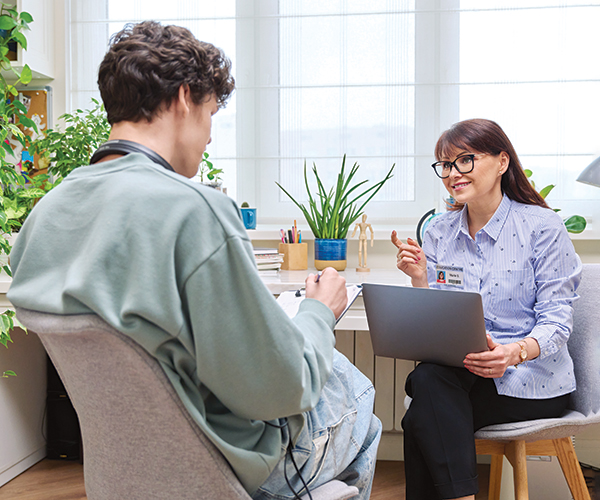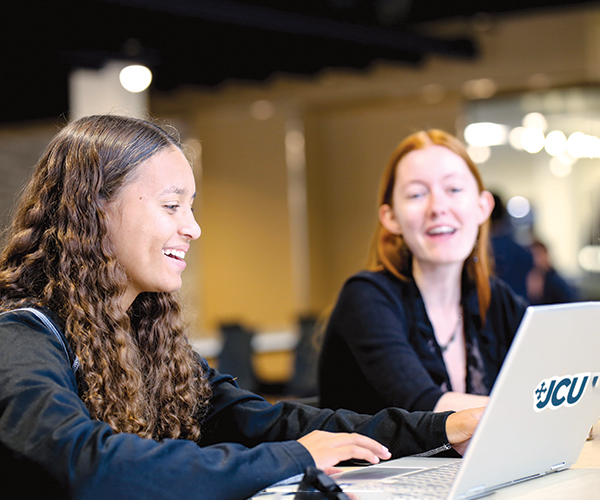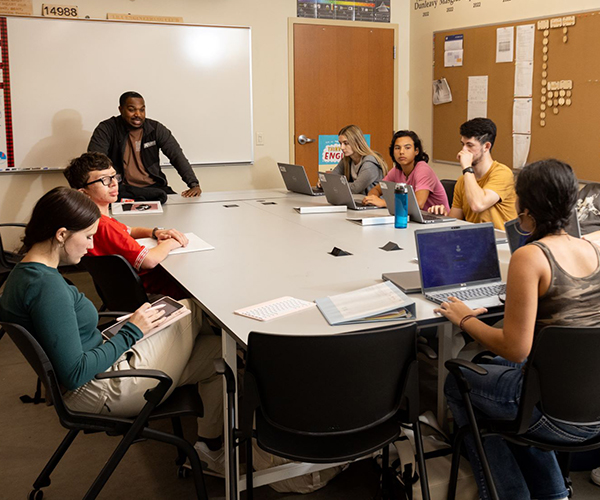Greater Cleveland Schools are Helping Students Receive Sensory Education
by Kristen Hampshire | Mar. 10, 2023 | 1:00 PM

Courtesy Laurel School
A sensory pathway winding through the halls at Canterbury Elementary School in Cleveland Heights is paved with stickers that guide students to crab walk, march, hop and move the busy out of their bodies. “Ultimately, it helps students self-regulate their physical and emotional state and improves focus,” says Julie Meese, intervention specialist.
Meanwhile, a dedicated room in the school is outfitted with tools like a cocoon swing, tunnel, weighted blankets, stretchy bands, calming bubble lamps and a soothing sound machine, among other items curated for the purpose of
providing sensory integration.
Some kids are easily overstimulated in the classroom, so the sensory space offers ways to re-center. Others lose focus because they need more “input” to get in the game. And while sensory integration is a well-known concept in the autism community, all kids benefit.
“Teachers have been using sensory in their classrooms for years,” Meese says, pointing to cozy corners with fuzzy pillows, fidgets, wobble stools and reading nooks.
And the reality is, we all have sensory needs that we fill throughout the day, often without realizing it. (If you're a gum chewer, a nail biter, a foot tapper, a hair twirler – you get the idea.)
Canterbury Elementary’s dedicated room gives students supervised time to regulate their bodies so they’re ready to learn. Students enter the room with adults who are there to help facilitate, and the opportunity is open to all students based on their needs.
“Ten years ago, this was more for special education students, and it is for everyone now and an effective approach we can use to help refocus students, calm them and help with social emotional issues,” says Principal Erica Wigton, noting how the sensory room and pathway have led to other efforts, including sensory boxes with tools for every classroom so that more kids can get their hands on resources without leaving the classroom.
While most schools do not have dedicated sensory rooms, integrating sensory learning into the curriculum is common, particularly at the elementary level. It’s essentially how we learn, points out Stacey Weiher, the toddler community guide at Ruffing Montessori School.
“Starting with toddlers, they are free to explore. If they want to go and play with water in the sink to experience cold and hot, they can do that for a period of time. For sensory education at home, a child might have a series of bells they can strike to learn the tones and put them in order from lowest to highest.”
Engaging, hands-on time in the classroom reaches different types of learners. “It’s easier for children to learn if they can hold, touch and explore,” Weiher adds. “If you think about newborns, that’s the only way they learn. They put things in their mouth, they look, they listen, they smell. Sensory is how we were born to learn.”
If you think about it, sensory materials are everywhere; they’re at the checkout counter. Slime, fidget spinners, poppits, squishy balls and beanbags are some examples. By filling a child’s sensory bucket in an organized way at school, teachers can reel in the student who might act out, drift during a lesson or experience social-emotional effects of dysregulation like agitation or anxiety.
“The fact that more schools are open to this and recognizing the important role of sensory makes me happy and hopeful as a parent and educator,” says Weiher. “The more input students get through their senses, the more rich their education will be.”
Learn how Lake Ridge Academy helps students see a global perspective
Get ahead of the weekend by signing up for our free weekly “In the CLE” newsletter — your guide to fun throughout The Land. Arriving in your inbox every Wednesday, this weekend to-do list fills you in on everything from concerts to museum exhibits — and more. Click here to subscribe.
Trending
-
1
-
2
-
3
-
4
-
5










